Carlos Hathcock II
Marine Corps Sniper
By James G. Fausone
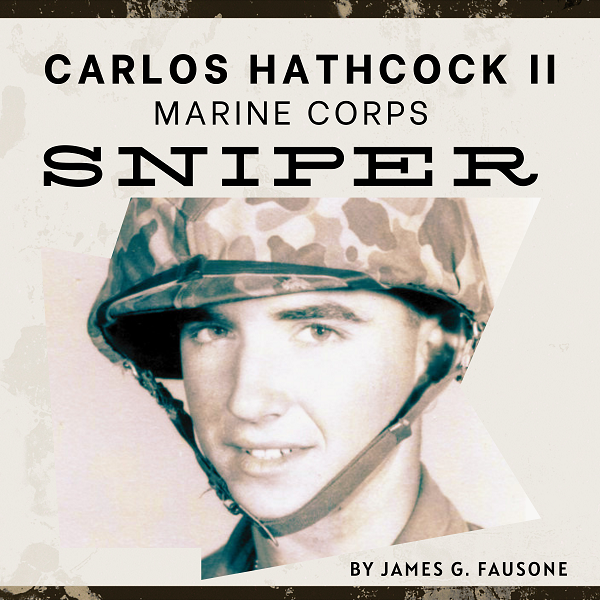
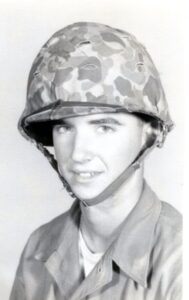
Every military has trained and deployed snipers to strike the enemy at long distances since the incorporation of long-rifle use. The term "sniper" put fear in human beings. The stories of snipers find their way into books and films. This is the story of a U.S. Marine Corps sniper that achieved legendary results in the Vietnam War. When young Carlos Hathcock took up hunting in the early 1950s as a little boy it was unfathomable that he would become a feared and renowned sniper in Vietnam.
Carlos Hathcock II: A Young Hunter
Carlos Norman Hathcock II was born in Little Rock, Arkansas in May 1942. He grew up in the small city of Wynne, less than 8,000 people, in northeast Arkansas. Wynne was a bit of an accident as the settlement started in 1882 because of a train derailment that left a box car off the track becoming the first building in Wynne. The advent of interstate roads in the 1920s and 30s put Wynne on the map with U.S. Route 64 and later the north-south Arkansas Highway 1 was built through town making it an important highway crossroads for several decades, in addition to being a railroad town. Now, however, Interstate 40 has largely diverted long-distance travel away from Wynne. Hathcock's upbringing in his hometown was not about the roads and rail, but about the hills and countryside.
The outdoors would have been his refuge away from a hardscrabble life. His parents separated and he moved in with his grandmother for the first 12 years of his life. His life lessons were that of a country boy roaming the woods with his dog. Young Carlos, like most boys his age, played army in the fields around the house. His father and namesake had been in World War II and brought back an old Mauser rifle as a souvenir. It was the perfect prop to march around and play soldiers against make-believe enemies. Mauser, originally, Königlich Württembergische Gewehrfabrik ("Royal Württemberg Rifle Factory"), is a German arms manufacturer. Their line of bolt-action rifles and pistols has been produced since the 1870s for the German armed forces. Even if he did not know it, Carlos had in his hands a classic marksman's rifle.
As he grew older, he visited family in Mississippi where again, an outdoor lifestyle was foremost. He went from make-believe to learning to hunt with a single-shot .22-caliber rifle made by J.C. Higgins. The company, J.C. Higgins, sold sporting goods, including rifles, through Sears, Roebuck & Co. for many years. These low-priced rifles gave a lot of bang for their buck and were made by numerous manufacturers that included just about every major gun company at the time like Savage, Mossberg, Marlin, Iver Johnson, Hi-Standard, and Winchester. Carlos had a reliable .22-caliber rifle to hunt small game. As a single-shot, bolt-action rifle, it required a skilled shooter. He was not shooting just for fun, but to bring food home for the family. This was the start for the future Marine marksman.
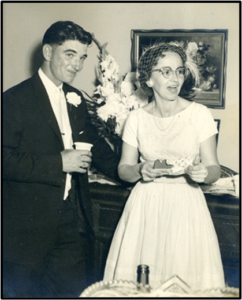
Joining Up - Expert Marksman
Carlos at an early age wanted to join the Marines. Upon reaching the age of 17, he joined the Marines. In May 1959, he joined the Corps which would be the focus of his adult life. Training at Marine Corps Parris Island would be as rigorous and transformative as you can imagine. Then as today, every Marine is first a rifleman, trained to follow orders and uphold the Constitution. Marines trained and prized marksmanship by holding regular pistol and rifle competitions. With his experience, Carlos qualified as an expert marksman at basic training and this started his rise in the Corps elite rank of shooters.
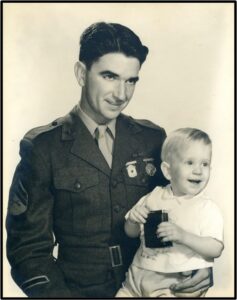
Hathcock II married Josephine Bryan Winstead on November 10, 1962, in North Carolina. They had one son, Carlos Norman Hathcock III, who also joined the USMC.
He would then go on to become a member of the Marine Corps Rifle Shooting Team. As such, he participated in prestigious competitions. This was target shooting with no one shooting back. Carlos would break virtually every record previously held and receive numerous awards, most notably the 1965 Wimbledon Cup U.S. Long Range High-Power Championship.
The Wimbledon Cup is a marksmanship trophy that was established in the 1870s by the British. In America, it was awarded annually during the National Rifle & Pistol Matches which are held at Camp Perry, Ohio, and it has become the most prestigious prize in U.S. long-range rifle shooting. Each year, the high-power phase of these matches traditionally takes place during the first two weeks of August. The Wimbledon Cup is awarded to the winner of a 1000-yard shooting match - in which the rules permit the use of "any sight," including telescopes. This young Corporal had made a name for himself in 1965 and his talent was recognized.
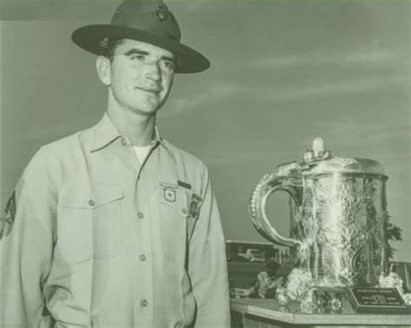
Tour of Duty - Sharpshooter
Shortly thereafter, Hathcock II was deployed to Vietnam for the first time in 1966. He was deployed as a military policeman, but immediately volunteered for combat and was soon transferred to the 1st Marine Division Sniper Platoon stationed at Hill 55, South of Da Nang. This is where Hathcock would earn the nickname "White Feather" - because he always wore a white feather on his bush hat, daring the North Vietnamese to spot him.
He had not only the eye to be a long-distance target shooter, but the other skills to be a feared sniper. Snipers had been critical to military operations since the advent of the long rifle. The term sniper dates back to the 1770s when British marksmen were known to be able to hunt snipes from a distance. Snipes are small, fast birds found in marshes. Sniper replaced the German-derived term, "sharpshooter," in the lexicon. Hathcock had joined a brotherhood of respected and feared soldiers.
The U.S. Military had long-rifle sharpshooters in the Revolutionary War. Again, in World War I, the military employed such marksmen in response to German sharpshooters. After "the war to end all wars," the U.S. military stopped training and equipping sharpshooters. When World War II began, the Army and Marine Corps were without such trained long-distance shooters. Again, the U.S. Military had to react, train, and equip these shooters for combat. Unfortunately, the lesson was not learned and again the military stopped training sharpshooters. This on-and-off affair was rooted in the belief that such snipers were ungentlemanly, pathological killers and not as dignified as regular soldiers and artillerymen. Target competitions were acceptable but deploying snipers had an uncomfortable feel to it. Being a sniper was not a career path to achieving a higher rank.
Sniper training in the U.S. had been ad-hoc and informal. The situation quickly changed as the U.S. military adjusted its attitude and approach toward snipers and sniper training. One of the men behind this new emphasis was U.S. Marine Corps (USMC) Major Edward James "Jim" Land. He established the first organized sniper training program in 1961 in Hawaii for the Marine Corps. According to him, the school was the springboard for early sniper schools in Vietnam for both the 1st and 3rd Marine Divisions. According to Peter Senich in his book, "Long-Range War: Sniping in Vietnam" (1994), the U.S. Army did not begin organized, in-country, division-level sniper training programs until early 1967. By mid-1968, however, the Army had several well-organized, in-country sniper schools supported by the U.S. Army Marksmanship Unit (USAMU).
By the time of the Vietnam War, the military leadership again embraced the role of sharpshooters in military strategy. Hathcock's skills were put to use as were many other snipers. The snipers are part of a 39-man platoon that is assigned to regimental headquarters as a supporting element similar to tanks or artillery. Each regiment in the Marine Corps, under the new table of organization, would have such a platoon. If a battalion or company commander needed one or more sniper teams, he would request them from the regiment in the same manner as he requests other attached supporting elements. The sniper battalion was quartered on Hill 55, about 12 miles south of Da Nang.
As his reputation grew, with the body count he left behind, the People's Army of Vietnam (PAVN) placed a bounty of $30,000 USD on Hathcock's life for killing so many of its soldiers. Rewards put on U.S. snipers by the PAVN typically ranged from $8 to $2,000. Hathcock held the record for the highest bounty and killed every known Vietnamese marksman who south him to try and collect it.
Legendary Kills
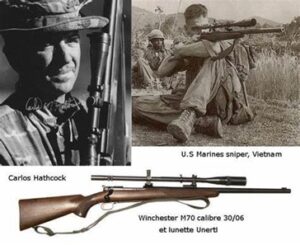
Hathcock is credited with a record-breaking 2,500-yard kill of a guerilla fighter with an M2 .50-cal machine gun with a single shot. The basis for his legend is not this roughly 1.4-mile shot, while extraordinary, it is based on some of the other kills.
The legend of Carlos Hathcock is centered around his 93 confirmed kills and likely 300 - 400 unconfirmed kills. In Vietnam, a "confirmed kill" required confirmation by the spotter and an officer which explains the wide difference. To understand the extraordinary effort snipers underwent, you must think about the terrain, weather, and opposing troops. The terrain could be hilly, mountainous, or swampy. There was almost always dense vegetation that needs to be accounted for to find the right angle for a shot. Vietnam is geographically located in the tropical zone but the weather varies significantly by latitude and longitude. The Central Highlands receive dry and hot winds. The Highlands are susceptible to hurricanes and flooding. The South is generally hot all year round with two seasons - rainy and dry. This diverse weather results in a diversity of vegetation including forests made up of evergreens, deciduous trees, bamboo, and tall grasses. The Mekong Delta is a wide and swampy region. Such wide-ranging landscapes result in unusual and plentiful animals only found in Vietnam. This unique biodiversity includes 12 species of mammals, 7 species of birds, 45 species of reptiles, 58 species of amphibians, 80 species of freshwater fish, and 7 species of saltwater fish. The jungles are home to more than 200 species of snakes in Vietnam and about 25% of them are venomous.
The American snipers, out in the jungles as predators, had to worry about the animal predators that could poison them or give away their location. Additionally, the American snipers were prized targets for the NVA troops and snipers. The enemy always has a say in the battle, or to put it another way, the prey has a say, not just the hunter.
The weaponry of the day in the 1960s was not all that sophisticated and leaned on the skill of the marksman. There were no laser sights or computer assists. Hathcock generally used a Winchester Model 70 chambered for .30-06 Springfield cartridges, with the standard 8X Unertl scope. On some occasions, however, he used a different weapon: the M2 Browning machine gun, on which he mounted an 8X Unertly scope, using a bracket made by Seabees metalworkers. Hathcock made a number of kills with this weapon in excess of 1,000 yards, including his record for the longest confirmed kill at 2,500 yards. Hathcock also carried a Colt M1911A1 pistol as a sidearm.
The Unertl scopes were simplistic and rugged. The Unertl Optical Company, Inc. was a manufacturer of telescopic sights in the United States from 1934 until 2008. They are known for their 10x fixed-power scopes that were used on the Marine Corps M40 rifle and made famous by Marine Corps scout snipers. So armed, the snipers went to work.
Thru the Scope
A NVA sniper was sent to kill Carlos Hathcock. Once a sniper has a reputation, he or she is now at more risk. Known as "Cobra," the NVA sniper was picking off Americans around Hill 55. Obviously, the Cobra was trying to draw White Feather out.
When the NVA sniper killed a friend outside Hathcock's hooch, White Feather vowed to take Cobra out. Command offered to transfer him away from Hill 55, but this was personal. He felt that he was a little better than the Cobra but that may have been just Marine swagger talking. They stalked each other for days. At one point, a mistake was made, Hathcock tripped over a log and the sound gave Cobra a target. Cobra's shot hit Hathcock's spotter's canteen, causing no injury. Now Hathcock had a direction to focus on by the way of the off-target shot. Both Cobra and Hathcock patiently played cat and mouse. However, Cobra was facing the sun and a quick glint off his scope prompted White Feather to shoot. It was nothing more than a glint, not an outline of a man or the profile of a shooter. As Hathcock has stated, "I shot straight through the scope, did not touch the sides. It did a pretty good job on his eyesight, you could say."
Female VC Leader
Another legendary shot was his termination of a woman known as "Apache." She was a platoon leader known for torturing Americans. She was known to skin her captures thus earning her nickname.
In November of 1966, Apache captured a Marine Private and tortured him within earshot of his own unit. "She tortured him all afternoon, half the next day," Hathcock recalls, "I was by the wire... He walked out, and died right by the wire." Apache skinned the private, cut off his eyelids, removed his fingernails, and then castrated him before letting him go. She kept him alive and enjoyed the screaming until she turned him loose to run into the razor wire.
This shot also became personal for Hathcock. "She was a bad woman," he said of the female VC leader known as "Apache." Normally, kill squads would just kill a Marine and take his shoes or whatever, but the Apache was very sadistic. She would do anything to cause pain." "I was in her backyard, she was in mine. I didn't like that," Hathcock said. "It was personal, very personal. She'd been torturing Marines before I got there."
Later, Hathcock saw a group of five NVAs who were on a trail. At 700 yards out, Apache squatted to pee and White Feather knew it was the woman known as Apache. "I saw a group coming, five of them. I saw her squad pee, that's how I knew it was her. They tried to get her to stop, but she didn't stop. I stopped her. I put one extra in her for good measure." Those two shots stopped all her future torturings of American Marines.
The NVA General
Any good hunter has to understand his prey. Where does it feed, hunt, drink, sleep, or prowl are questions asked by every game hunter. A sniper must answer these same questions to understand the person he is seeking. Early morning and evening were Hathcock's favorite times to strike. "First light and last light are the best times," he said. "In the morning, they're going out after a good night's rest, smoking, laughing." When they come back in the evenings, they're tired, lollygagging, not paying attention to detail."
"Carlos became part of the environment," said Edward Land, Hathcock's commanding officer. "He totally integrated himself into the environment. He had the patience, driver, and courage to do the job. He felt very strongly that he was saving Marine lives." A difficult target may take days to zero in on. Hathcock calls it "squirmin' and wormin'."
Wearing a "ghillie suit" he customized, he was more than camouflage; he was part of the environment. Ghillie suits trace its history back to the Scots. The original ghillie suits were used by servants assisting sportsmen. The first known military use was a Scottish Highland regiment that went on to become the British Army's first sniper unit in about 1916 during the Second Boer War.
A mission to take out a NVA General was assigned to the snipers. Hathcock felt it was the most difficult of missions and took it on rather than send a less experienced sniper. Hathcock would have made the Scots proud and was so well hidden the NVA troops nearby cooking and camping outside the General's headquarter never saw or stumbled upon him. It took four days of squirmin' and wormin' to get close enough to the camp. At no time did the NVA think a single-troop would take on such a mission. During that ordeal, he had a venomous snake slither over him without incident but not without causing his blood pressure to rise. Finally, on the fourth morning when the NVA troops "were lollygagging," he saw his opportunity. At 700 yards, he "dumped the guy" with a single shot. The General was dead.
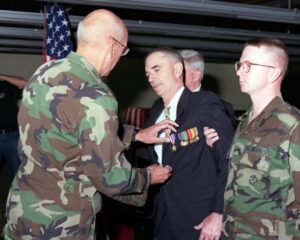
The sniper must then escape. Carlos was glad to see the NVA run in the opposite direction where there were more trees. They had no idea how many troops were going to follow up on the single shot. The chaos that was created is the retreating sniper's friend and he made his way back to Hill 55. Shortly thereafter, he was sent back to the States in 1967.
The Actions of a Marine Hero
Hathcock returned to Vietnam in 1969, taking command of a sniper platoon. Like many Marines, he had missed the action and felt most alive in-country.
On September 16, 1969, Hathcock was riding in an AMTRAC that was struck by an anti-tank round. He was injured, but his instinct, drive, and adrenaline kicked in. He went back into the AMTRAC to pull seven Marines out. he ended up with burns on over 90% of his body and was sent home. Nearly 30 years later, he received a Silver Star for this action.
SILVER STAR ACTION DATE: September 16, 1969
CITATION:
"The President of the United States of America takes pleasure in presenting the Silver Star to Staff Sergeant Carlos N. Hathcock, II (MCSN: 1873109), United States Marine Corps, for conspicuous gallantry and intrepidity in action while serving as a Sniper, Seventh Marines, FIRST Marine Division, in connection with military operations against the enemy in the Republic of Vietnam on 16 September 1969. Staff Sergeant Hathcock was riding on an Assault Amphibious Vehicle which ran over and detonated an enemy anti-tank mine, disabling the vehicle which was immediately engulfed in flames. He and other Marines who were riding on top of the vehicle were sprayed with flaming gasoline caused by the explosion. Although suffering from severe burns to his face, trunk, and arms and legs, Staff Sergeant Hathcock assisted the injured Marines in exiting the burning vehicle and moving to a place of relative safety. With complete disregard for his own safety and while suffering excruciating pain from his burns, he bravely ran back through the flames and exploding ammunition to ensure that no Marines had been left behind in the burning vehicle. His heroic actions were instrumental in saving the lives of several Marines. By his courage, aggressive leadership, and total devotion to duty in the face of extreme personal danger, Staff Sergeant Hathcock reflected great credit upon himself and the Marine Corps and upheld the highest traditions of the United States Naval Service."
Post-War
At the time, Hathcock did not want any awards or recognition for his efforts. He was doing what any Marine would do to help his mates. However, 30 years later, he finally received a Silver Star for his actions of bravery.
After returning to active duty, Hathcock helped establish the Marine Corps Scout Sniper School at the Marine base in Quantico, Virginia. However, he was in near-constant pain due to his injuries, and in 1975, his health began to deteriorate. After being diagnosed with multiple sclerosis, he was medically discharged in 1979. He received a 100% disability payment for life but the Gunnery Sergeant was separated just 55 days short of 20 years and missed out on retirement pay. Feeling forced out of the Marines, Hathcock fell into a state of depression. But with the help of his wife, and his newfound hobby of shark fishing, Hathcock eventually overcame his depression.
In a book written by Peter Senich, "The One-Round War: USMC Scout-Snipers in Vietnam (1996 ed.)," Hathcock said about his career as a sniper: "I like shooting, and I love hunting. But I never did enjoy killing anybody. It was my job. If I don't get those bastards, then they're gonna kill a lot of these kids dressed up like Marines. That's the way I look at it."
When in a better mind, he continued to help Marine snipers and assisted in establishing the Marine Corps Scout Sniper School at the Marine base in Quantico, Virginia.
While Carlos Norman Hathcock II survived Vietnamese snipers and anti-tank rounds, it may have been Agent Orange that got him in the end at age 75. Hathcock passed away on February 22, 1999, from complications with multiple sclerosis. Sadly, there has not been a sufficient study to link Agent Orange exposure, which Hathcock clearly had while "squirmin' and wormin'" around, to multiple sclerosis. According to the VA, one study from 2017 did find: "While this study did not evaluate any specific exposure, they did find active-duty service members that were deployed to a combat zone had a 22.4% higher rate of MS compared to those that were not deployed."
Carlos Norman Hathcock II was buried with full military honors at Woodlawn Memorial Gardens in Norfolk, Virginia.
About the Author
Jim Fausone is a partner with Legal Help For Veterans, PLLC, with over twenty years of experience helping veterans apply for service-connected disability benefits and starting their claims, appealing VA decisions, and filing claims for an increased disability rating so veterans can receive a higher level of benefits.
If you were denied service connection or benefits for any service-connected disease, our firm can help. We can also put you and your family in touch with other critical resources to ensure you receive the treatment you deserve.
Give us a call at (800) 693-4800 or visit us online at www.LegalHelpForVeterans.com.
This electronic book is available for free download and printing from www.homeofheroes.com. You may print and distribute in quantity for all non-profit, and educational purposes.
Copyright © 2018 by Legal Help for Veterans, PLLC
ALL RIGHTS RESERVED



